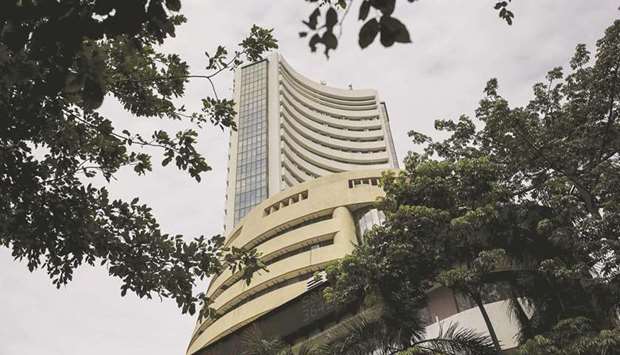Indian stocks plunged along with markets across Asia amid a global selloff in risk assets sparked by the surging US yields. The S&P BSE Sensex fell 3.8% to 49,099.99 points in Mumbai, its biggest decline since early May. The NSE Nifty 50 Index also slipped by a similar magnitude yesterday.
The Indian rupee declined 1.4% yesterday, the biggest drop since March, to 73.4650 per dollar, while benchmark 10-year bonds were poised for the biggest monthly loss in almost three years, with yields having climbed by 32 basis points.
“Panic in global bond markets led to sharp rise in yields which spooked investors amid fears of interest rate cycle reversal,” said Hemang Jani, head of equity strategy at Motilal Oswal Financial Services. “The market correction might continue for some time till inflation fears ease.
Data due will probably show India’s gross domestic product expanded 0.6% in the three months ended December, after contracting for two consecutive quarters, according to the median forecast in a Bloomberg survey of economists.
Foreign investors have pulled out $157.4mn from local stocks this week through Wednesday, even though for the month it recorded a net inflow of $3.9bn.
All 19 sector sub-indexes compiled by BSE Ltd were trading in the red, led by a gauge of lenders. HDFC Bank Ltd with a 2.5% drop, was the biggest drag on the Sensex. All 30 stocks on the benchmark gauge were in the red.
Meanwhile the rupee dived 104 paise to settle at 73.47 (provisional) against the US dollar on Friday, following a heavy selloff in domestic equities and strong American currency in the overseas market.
At the interbank forex market, the local unit opened at 72.43 against the greenback, then lost further ground to touch an intra-day low of 73.51.
It finally ended at 73.47 against the American currency, registering a massive fall of 104 paise over its previous close.
On Thursday, the rupee had settled at 72.43 against the American currency.
The dollar index, which gauges the greenback’s strength against a basket of six currencies, advanced 0.43% to 90.52.
“US bond yields have surged on worries about inflationary pressures due to unprecedented liquidity infusion in the system and a series of economic data, which is indicating that the economy is on the path to normalcy.
This has in-turn led to a rebound in the dollar index and prompted a selloff in risk assets.
“We think that the rupee could see some more depreciation till the 73.50 mark, as the narrowing interest rate differential between India and US could prompt some outflows from the Indian bond and equity market,” Sugandha Sachdeva VP-Metals, Energy & Currency Research, Religare Broking, said.
However, it is too early to term this as a weakening bias for the domestic currency, and unless it sustains levels below 73.50 comfortably, the scope for appreciation remains, she added.
Meanwhile, Brent crude futures, the global oil benchmark, fell 0.99% to $66.22 per barrel.
On the domestic equity market front, the BSE Sensex ended 1939.32 points or 3.80% lower at 49,099.99, while the broader NSE Nifty slumped 568.20 points or 3.76% to 14,529.15. Foreign institutional investors were net buyers in the capital market as they purchased shares worth Rs 188.08 crore on Thursday, according to exchange data.

The Bombay Stock Exchange building in Mumbai. The BSE Sensex closed down 3.8% to 49,099.99 points yesterday, its biggest decline since early May.


